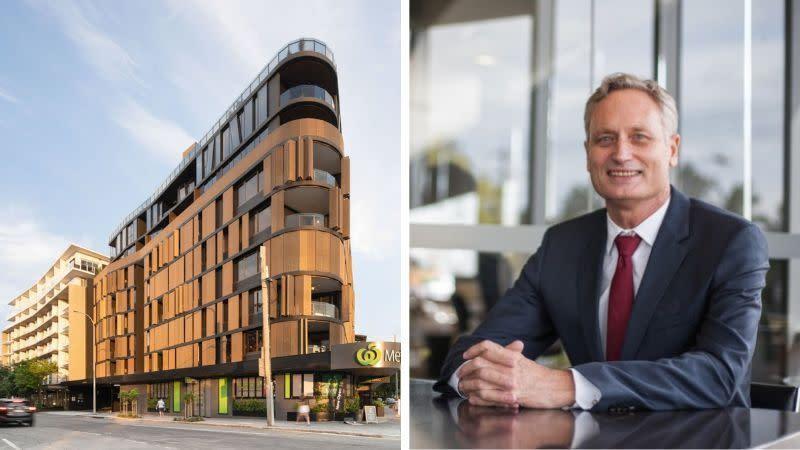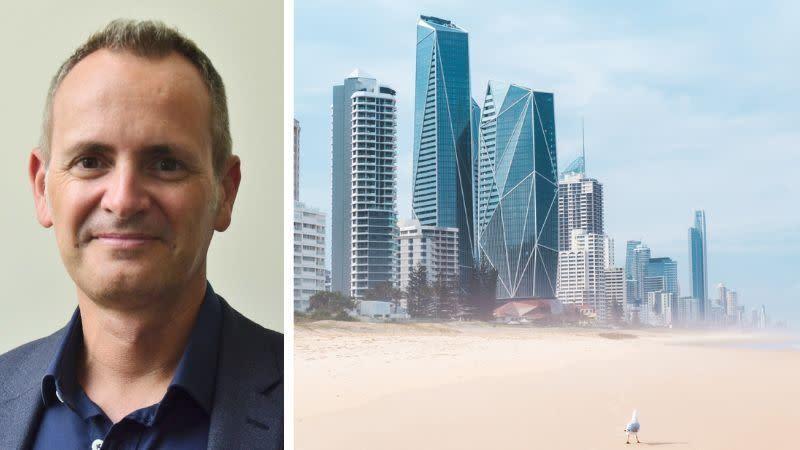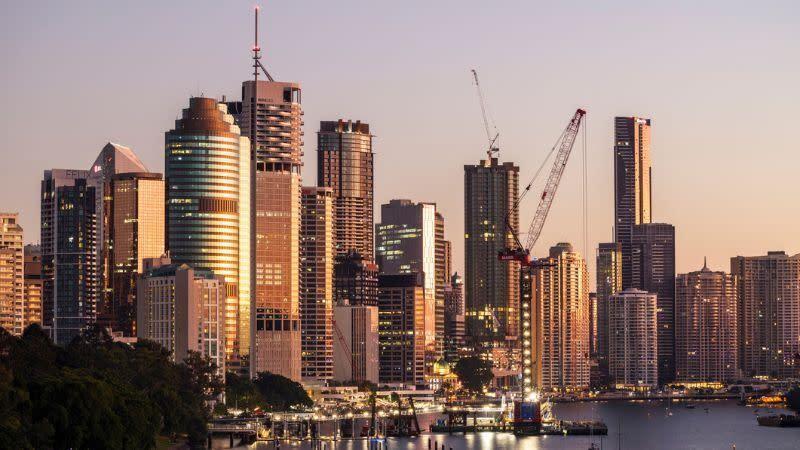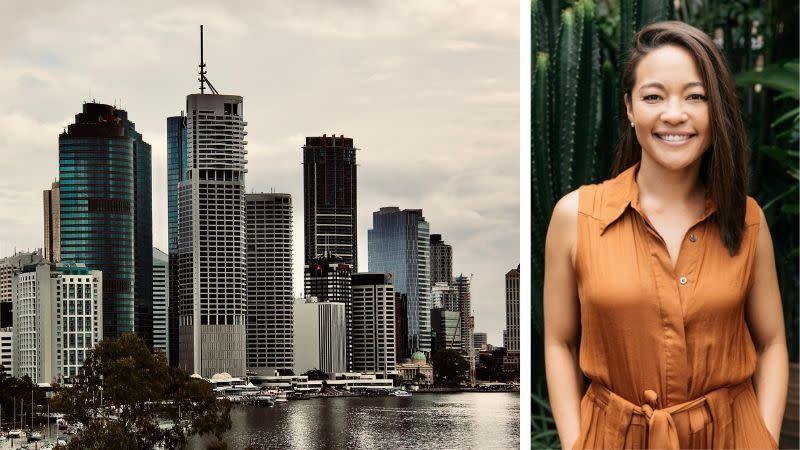[+] Top Tier Builder Shortfall Crippling Sunshine State
EXCLUSIVE
PHIL BARTSCHWED 24 MAY 23
“We’ve knocked back about $7 billion worth of work just this year.” That jaw-dropping confession from Scott Hutchinson, chairman of Australia’s largest privately-owned construction company, paints a telling picture.
And, clearly, the view from the industry’s top tier is no postcard to send home. Rather, it is a grim panorama of an industry still reeling from pandemic-induced challenges—notably supply chain disruptions, materials shortages and cost escalation—and is now grappling with a dire lack of capacity to deliver a massive national pipeline of public and private projects.
“The market will sort itself out but it won’t be pretty,” Hutchinson says. Perhaps nowhere more so than Hutchinson Builders’ home state of Queensland. According to the latest Construction Skills Queensland data, across the state there is a construction pipeline of $65.6 billion in committed projects and $107.2 billion in planned projects.
Overall, its five-year civil construction program now sits at a level not seen since the resources boom in 2012.
But the delivery challenge for Queensland—particularly in the lead-up to hosting the 2032 Olympics—lies in the fact it is competing with demand for talent, materials and resources from the significantly greater pipelines south of its border in New South Wales and Victoria.

Historically, the Sunshine State also has not been a preferred stomping ground of many Tier 1 construction firms—somewhat constraining its capacity by comparison.
“Right now, we’ve got a shocking bottleneck,” Hutchinson says. “It’s as bad as it can get and as bad as I’ve seen.”
In the past couple of weeks alone, of the $1.7 billion worth of work put in front of Hutchinson Builders it agreed to go ahead with just $150 million of the projects. But Hutchinson says its judgement calls on jobs are not being based just on capacity but also “quality of clients”. That is, if the price of construction—still “creeping up” by 1 to 2 per cent a month—continues to go up “will they still be able to build it”.
“A lot of it we’ve knocked back because we don’t reckon it’s got much chance of getting off the ground.
“You can only do so much,” he says. “So you go with the stuff that’s most likely to go ahead and most likely to make some money.”
Too-hard basket
Australian Constructors Association chief executive Jon Davies says from a vertical construction perspective Queensland is viewed as “a very difficult place to operate”.

“That has limited the number of players that operate in Queensland because it’s quite hard to move into the state given the regulatory environment with things like the best practice industrial conditions.
“So it’s going to be interesting to see how that plays out because Queensland’s pipeline is increasing significantly … and obviously there's an Olympic overlay to that as well, but it is something that could become problematic,” Davies says. Difficulty in securing a builder has already led to a rising number of developers mothballing their Queensland projects or selling their development approved sites, particularly in Brisbane and the Gold Coast.
▲ Scott Hutchinson: you can only do so much.But, according to Hutchinson, therein lies the key to the industry’s capacity woes.
“The big issue is just supply and demand and there's no answer or cure for it,” he says. “We’ll get through it because the private work will fall away, nothing will stack up
“That's what’s going to calm it down. And we’re going to see more builders go bust, more jobs mothballed until it sorts itself out.”
Davies says with a review under way into the nation’s $120-billion federal infrastructure program, and NSW and Victoria running the rule over their major projects, another scenario also could well play out providing a boost to Queensland’s top tier construction capacity.

“We are seeing a greater amount of uncertainty in pipelines of work across the country, with the one exception of Queensland,” he says. “It’s now becoming one of the few places in the country that has a strong and reliable pipeline of work.
“And I think despite those sovereign risks associated with doing business in Queensland we will see a natural gravitation of contractors and resources to Queensland for that reason.”
Hutchinson, however, has his doubts.
▲ Australian Constructors Association chief executive Jon Davies: Queensland is viewed as “a very difficult place to operate”.▲ Brisbane-based developer Don O’Rorke says the bottleneck can only get worse before it gets better.

“It has been the same thing for years. Queensland has always been a graveyard for interstate builders. The Tier 1 builders come up here, they lose money and then go back. It’s so overly competitive they struggle to make money.”
Queensland Major Contractors Association chief executive Andrew Chapman says both blue-collar and white-collar workers were needed and for years there has been a “brain drain” to the southern capitals.
“There is an attractive pipeline of work up here there is no doubt but when there is still a lot of work going on in Melbourne in Sydney, which is effectively double the amount that's being spent here, you find that companies tend to dedicate a lot more resources to those markets.
“But I think as Melbourne, in particular, starts to contract its capital works program we'll start to see resources coming back up here because there’s some exciting projects. You've got the Olympics going to come online … a lot has to happen in a short period of time.
“And if we want to make it attractive for industry to work in Queensland we need collaborative procurement and delivery across everything to make that happen.”
Brisbane developer Don O’Rorke—the chief executive of Consolidated Properties, which has teamed with Hutchinson Builders on projects for more than 30 years— says Queensland’s construction pipeline bottleneck can only get worse before it gets better.
“It's going to get worse because of the Olympics, public works and housing,” he says. “There’s a huge amount of demand for construction services and an inability of the market to meet that demand.”
And despite higher interest rates resulting in a drop in apartment approvals and new starts that may help curb demand for construction services, O’Rorke says: “I think we’re in for a bumpy few years.
“It’s going to be a volatile market where not everything that perhaps people want delivered is delivered … only a select number of projects will stack up and get up.”
Problems of growth
On the positive side, he says, the challenges facing Queensland’s development and construction sector are “the problems of growth”.
“We are in a high growth economy in south-east Queensland and these are the problems that come with places growing fast.
“A country like Japan—where there’s no immigration, the population is ageing and they have very low birth rates—would love to have the problems we’ve got.
“So we shouldn’t complain too much. These are the problems of growth and growth we’ve always been after.”
Riye Arai-Coupe, partner at Brisbane-based development project management and advisory firm Bluebird, agrees but says the market is challenging “Everyone that is currently delivering or trying to deliver a project right at the moment has never experienced the conditions that we're currently facing.”

Last year, she says, the firm's team did more than 2000 feasibilities “so we’re well across what's working and what’s not working”.
“If you’re expecting to go out to hard tender right now, good luck. Basically, you’re not going to get anywhere because the builders are so busy. Their
▲ Riye Arai-Coupe: if you’re expecting to go out to hard tender right now, good luck.workbooks are pretty full right now and they’re very selective in terms of who they want to build with.”
But she says there are projects progressing and developers who have “invested in long-term relationships with builders are the ones that will prosper”.
Or as Hutchinson sees it: “You don’t want rubbish clients. That’s why a lot of people are struggling to get a builder because they’ve wrung their builder dry for 10 years and everyone knows that now”.
Arai-Coupe says Queensland's construction crunch is not only about a lack of builders but, more significantly, a lack of subcontractors in the market able to deliver on the work.
“Even if interstate builders come up here, we still need to have the subcontractor base to be able to deliver on those projects.
“When they have a choice of whether they deliver traditionally riskier projects relative to government-funded projects, it's a bit of a no-brainer in terms of where they would want to go spend their time and energy right now.
“And in terms of the volume of infrastructure projects that are proposed for southeast Queensland and the limited amount of projects getting out of the ground right now … I think it’s a pretty simple picture that’s been painted for our foreseeable future. We just need more people.”
